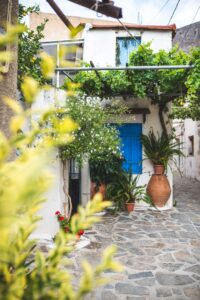
Balancing Growth and Preservation in Ann Arbor
A new post at Urban Canopy Chronicles examines some of the ways that development is affecting Ann Arbor.
Vibrant downtown streets and neighborhoods laced with historic districts are what give Ann Arbor its distinctive character. But historic preservation is a costly business. And the city has a lot of history to protect.
The City of Ann Arbor’s Urban & Community Forest Management Plan
Ann Arbor, often recognized as “the tree city,” boasts a distinctive feature with its abundant trees, which play a vital role beyond their aesthetic appeal. The city’s trees, along with shrubs and woody vegetation, serve as a fundamental component, contributing various benefits to the community. Not merely ornamental, these trees play a crucial role in mitigating stormwater runoff, preventing erosion, reducing summer temperatures, and promoting overall human health and well-being. In maintaining this verdant landscape, the importance of services such as “Ann Arbor tree service” becomes evident, ensuring the preservation and care of these essential natural assets.
The City’s first Urban & Community Forest Management Plan, adopted in 2014, provides a framework for sustainably maintaining and expanding the city’s tree canopy. The city’s tree program is guided by the plan and a community-based Steering Committee.
The city is continuing to implement a series of recommendations from the management plan. For example, staff is looking into how to improve tree planting success by identifying best practices for time of year, species, contractors and post-planting maintenance, such as watering. The city is also analyzing data to determine what factors affect the mortality rate of new street trees and may adjust the program accordingly. The city’s greenbelt millage – the money raised from the city’s open space and parkland preservation tax – is helping fund this work.
The City of Ann Arbor’s Ten Thousand Trees Initiative
Most towns and cities have something they’re proud of, whether it be the blueberry capital, a garden state, or the city of love. Ann Arbor is no exception. It’s known as “Tree Town” for its abundance of trees, both growing along streets and in mowed areas of parks.
Managing this urban forest requires constant attention and a commitment from the City’s forestry team as well as its residents. During the last decade, the City has planted more trees than it removed, despite losing a significant number to natural causes or to development.
The City is also attempting to increase the diversity of its tree population. Currently, trees of the genus Acer are over-represented in its publicly managed population. To address this, the City is planting more trees of genera such as Cels (Hackberry), Gymnocladus (Coffeetree) and Quercus (Oak).
The City of Ann Arbor’s Tree Policy
The city of Ann Arbor is affectionately known as “Treetown” for the many trees that line its streets and parkways. Its tree canopy includes 157 municipal parks that range from neighborhood green spots to university recreation areas.
The forestation of urban landscapes is an essential part of a community’s quality of life. Research shows that people who live in neighborhoods with high levels of tree canopy have lower rates of heart disease and obesity.
However, despite the benefits of tree planting and preservation, there are still obstacles to achieving greater urban canopy density in communities. One of the most significant challenges is systemic racism, which continues to contribute to low levels of tree cover in communities of color.
Michigan lawmakers in the lame duck session are trying to strip local governments of their ability to require protection of heritage trees and regulate landscaping standards for new developments. The bills, sponsored by Sen. Tom Casperson, would prevent municipalities from enforcing ordinances that require permits or mitigation for trimming and removal of trees on property with an agricultural, commercial, or business zoning classification.
The City of Ann Arbor’s Urban Forestry Program
Home to 163 parks, the Huron River and gorgeous tree-lined streets, Ann Arbor residents have a lot to love about their community. But the City is constantly balancing the needs of people and nature, and the Urban Forest Management Plan is one of their most important tools in doing so.
The plan lays out a framework for managing the City’s urban tree canopy as a sustainable asset consistent with the values and needs of Ann Arbor residents, while maximizing the benefits that the community receives from its trees. The plan includes 17 recommendations to accomplish this goal.
To learn more about the City’s urban forest, visit the online mapping tool and take a virtual tree tour. You can also view the City’s recommended actions and take an online survey to provide your input on the recommendations.


